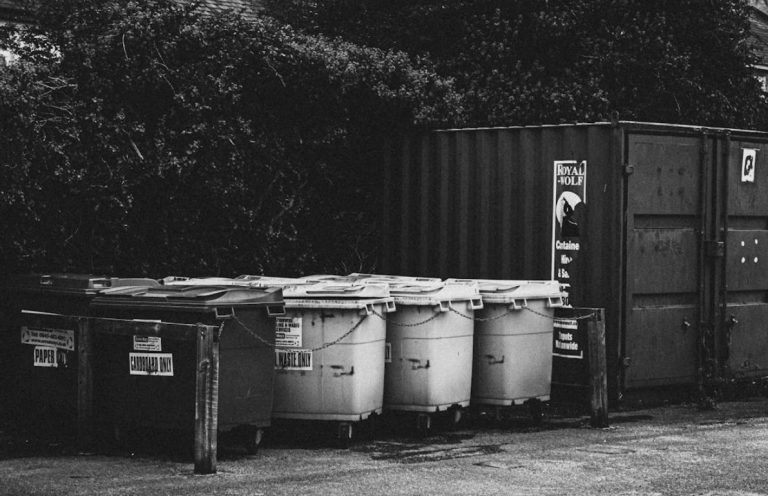Home renovations can breathe new life into your living space, providing comfort, functionality, and aesthetic appeal. However, they often come with a significant downside: waste. Construction and demolition materials contribute substantially to landfill overflow, posing environmental challenges.
Adopting sustainable practices in home renovations helps reduce waste, conserves resources, and minimizes your carbon footprint. One practical approach involves understanding 10-yard dumpsters and how they can assist in waste management. Here, we will explore practical tips for reducing waste during home renovation projects.
Story Stages
Planning for Sustainable Renovations
To start eco-friendly renovations, we use the principle of sustainability even at the planning stage. Once familiar with the project scope, you will consider what parts of your renovation can be sustainable using recycled or repurposed materials. This may include applying reclaimed wood, recycled metal, or salvaged items such as doors or other parts.
Furthermore, planning early on can also offer the possibility of reconstruction. Demolition involves destroying a building to the ground, but designing for deconstruction permits you to disassemble it piece by piece, preserving the majority of the materials aimed for reuse. Thus, decreasing the waste that goes to landfills is a practice that should be developed and followed in the future.
Afterward, create a detailed renovation plan, including precise measurements and materials lists. An effective plan will help you avoid overspending and waste. It is wise to get a contractor with sustainable building experience to evaluate the project. They can suggest eco-friendly building materials and methods that weren’t obvious at the beginning.
Selecting Sustainable Materials
Materials cease to be a specialty but become crucial in sustainable renovations. Go for materials that have a long lifespan and are environmentally friendly, such as the locally sourced ones, minimizing transportation costs. Sustainable materials like bamboo floor covering, which is repeating, and a fast-growing plant settle into the sustainable category, with a part of “Sustainability” being defined by using low-VOC paint that is good for indoor air quality and the environment.
Another well-designed sustainable solution is to reclaim some materials with the proposal. These materials are often used, and their uniqueness is another plus for the house. You are likely to find reclaimed pieces of wood, brick, or even tiles at demolitions or unique places at the stores. Moreover, recycling materials reduces waste and minimizes the demand for new raw materials.
Efficient Waste Management
Waste management is one of the most essential parts of your house’s eco-renovation. Well, how to get it right? Get rid of waste by separating the following categories of waste you have at your disposal: recyclable, compostable, and trash. The result of such a separation would be an effective recycling of the materials such as metals, plastics, and glass. On the contrary, biodegradable materials such as wooden pieces and drywall can be completely changed. And the best thing is that all of that can happen without involving any landfills.
For those carrying out renovation projects, hiring a 10-yard dumpster is the way to go. 10-yard roll-off dumpsters are what you’re looking for when you don’t have that large but not too small job to do and you want everything to stay well-organized and neat. They’re equipped with other recycling options. You can dispose of small pieces of wood, metal, screws, and sand into it. Overfilling is not a problem during construction when one of these is present. Not causing future dumping removes the piled up rubbish in the house after you finish the job.
Reuse and Repurpose
Care thoroughly through all the waste items before throwing any away; see if you can recycle them. Doors, windows, and cabinets offer unique opportunities for rejuvenation, lending them brand new life with your imagination and a pair of skilled hands. Forging those items into different components for use reduces waste and adds originality to your redesign.
Repurposing common goods goes even further than it seems. Old wooden beams can be turned into stylish shelving or furniture, while leftover tiles can be arranged aesthetically to create decorative mosaics. Creative exploration of the materials you already have can help you manage waste and give your house a unique and beautiful ambiance.
Reducing Energy Consumption
It mixes thoroughly with using energy-efficient procedures, windows, doors, and other vital parts of sustainable renovations. Houses lose insulation over time and wear away the window panes, frames, and doors. With increased insulation and energy-efficient doors and windows, energy consumption can be reduced significantly, thus reducing heating costs, too.
Another consideration is the installation of energy-efficient appliances and lighting. For example, Solar panels are environmentally friendly and enable one to slash the cost of electricity bills by saving through renewable energy. In the long run, such panels will pay for themselves as your electricity bill shrinks.
A smart home system can help save energy even more. Devices such as smart thermostats, lighting, and household appliances are designed to automatically switch off or reduce their power consumption when not in use. Even in a home-based setting, they still help the problem of pollution. These technologies add sustainability to your way of life by reducing energy depletion in a house to a large extent.
Conclusion
Sustainable home improvements benefit the natural environment and increase your home’s comfort and durability. Other strategies, such as reusing durable materials, effectively managing waste, and converting needless items into more valuable materials, can noticeably optimize the environmental effects of your renovation project.
What’s more, using 10-yard dumpsters or dumpsters in the market can assist in waste management, reducing the chances of missing the project’s track and keeping it earth-friendly. By following such habits, a renewable living source for you and those coming later is sustained.
Going through sustainable renovation leads to an eco-friendly home that is not only beautiful but also functional and aligned with what is ecologically significant. They aspire big and start small, developing a culture of efficient resource use and purposeful living.
